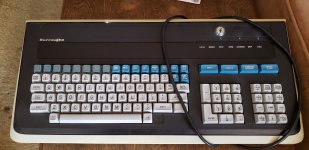Tincanalley
Experienced Member
I'd love to use it, but I don't know if it is compatible with PCs. I believe it is a terminal keyboard from around '78. I know I'll never get the function keys working, and that doesn't matter, but if I could get it working as a standard keyboard, it would be cool. Right now it's just on display.

